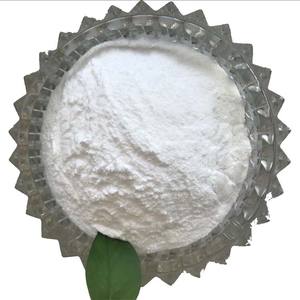Introduction to Polycarboxylate Water Reducers: A Game-Changer in Modern Concrete Modern Technology
Polycarboxylate water reducers (PCEs) have become the most advanced course of superplasticizers in concrete solution, transforming the way engineers design high-performance building materials. Unlike standard naphthalene or lignosulfonate-based admixtures, PCEs use premium diffusion effectiveness, depression retention, and compatibility with a large range of cementitious systems. Their unique molecular style allows precise control over rheology and workability, making them crucial in producing ultra-high-performance concrete (UHPC), self-consolidating concrete (SCC), and lasting green building solutions throughout global infrastructure tasks.
(Superliasticizer)
Molecular Structure and Mechanism of Activity
The efficiency of polycarboxylate water reducers stems from their comb-like copolymer structure, containing a primary chain with pendant polyethylene glycol (PEG) side chains. This setup permits solid electrostatic repulsion and steric barrier between cement fragments, protecting against agglomeration and improving flowability without too much water content. Unlike conventional plasticizers that count exclusively on fee stablizing, PCEs utilize both electrostatic and steric devices– enabling greater dosing adaptability, longer slump retention, and enhanced early-age stamina advancement. This dual-action device is essential to achieving fluid yet stable concrete mixes even under tough problems.
Advantages Over Standard Superplasticizers
Polycarboxylate water reducers surpass older-generation superplasticizers in numerous facets. Contrasted to sulfonated naphthalene formaldehyde (SNF) and melamine formaldehyde (SMF) polymers, PCEs display lower dosage needs, better compatibility with mixed concretes, and minimized level of sensitivity to sulfate content. They additionally minimize bleeding and segregation while keeping excellent cohesiveness in fresh concrete. In addition, PCEs are extra environmentally friendly, as they do not launch formaldehyde throughout mixing– a recognized health hazard connected with some traditional admixtures. These advantages make PCEs the recommended selection for modern, high-efficiency concrete production.
Duty in Lasting and Eco-Friendly Concrete Growth
With increasing focus on decreasing the carbon footprint of building products, polycarboxylate water reducers are playing a main function in enabling lasting concrete technologies. By permitting substantial reductions in water-to-cement proportions, PCEs support using auxiliary cementitious products (SCMs) such as fly ash, slag, and calcined clay– lowering reliance on Rose city concrete, a major resource of carbon monoxide two emissions. Furthermore, their ability to facilitate low-energy blending and extended pumping ranges boosts energy efficiency on building and construction websites. Advancements in bio-based and recyclable PCE versions are more straightening these admixtures with circular economy and net-zero goals in the built setting.
Applications Throughout High-Performance Building And Construction Sectors
The flexibility of polycarboxylate water reducers has resulted in widespread fostering across essential building markets. In bridge decks and tunnel cellular linings, PCE-modified concrete guarantees thick, impenetrable frameworks with improved resilience against chemical attack and freeze-thaw cycles. Precast and prestressed concrete elements take advantage of rapid toughness gain and decreased formwork cycle times. In offshore and aquatic engineering, PCEs add to chloride-resistant blends that extend service life in hostile environments. At the same time, architectural applications take advantage of PCE-enhanced SCC for complex formwork and exposed coatings, showing both practical and aesthetic benefits.
Technological Technologies and Next-Generation Formulations
Recurring research is expanding the capacities of polycarboxylate water reducers via molecular design, crossbreed solutions, and clever admixture systems. Tailored PCE structures with controlled molecular weight, side-chain density, and useful groups are being created to enhance performance in details concrete systems and ecological conditions. Hybrid PCEs including thickness modifiers or established accelerators are addressing particular niche requirements in 3D-printed concrete and cold-weather concreting. Additionally, stimuli-responsive PCEs that adjust to temperature level or pH changes during hydration are arising, using real-time performance adjusting for complex architectural applications.
Challenges and Compatibility Problems in Practical Usage
( Concrete Addtives)
In spite of their many benefits, polycarboxylate water reducers face challenges pertaining to cement variability, ambient conditions, and communication with various other admixtures. Concrete chemistry– including alkali web content, sulfate degrees, and excellence– can significantly influence PCE efficiency, causing uncertain slump loss or setting hold-ups. Compatibility problems might additionally arise when utilized together with retarders, accelerators, or air-entraining representatives, necessitating careful formulation changes. Field personnel need to likewise take care of dose accuracy, as overdosing can cause extreme bleeding or surface defects. Addressing these complexities calls for robust quality control methods and continual improvements in admixture compatibility testing.
Market Trends and Global Industry Dynamics
The international market for polycarboxylate water reducers is experiencing constant growth, driven by demand for high-performance concrete in Asia-Pacific, North America, and Europe. China leads in production and usage, supported by enormous framework investments and progressing requirements for durable building and construction. Trick international chemical providers are expanding into arising markets in Africa and Latin America, where urbanization and real estate demand are rising. Strategic collaborations in between admixture suppliers and concrete modern technology companies are speeding up item development and digital combination. Furthermore, governing changes toward greener construction methods are strengthening the long-term supremacy of PCEs in the admixture landscape.
Future Overview: Combination with Digital and Smart Building And Construction Equipment
Looking ahead, polycarboxylate water reducers will play an essential function in shaping the future of intelligent and computerized building and construction. Integration with Structure Information Modeling (BIM) platforms will certainly make it possible for anticipating admixture optimization based upon real-time job data. IoT-enabled dispensing systems and AI-driven mix modification tools will enhance consistency and decrease product waste on task websites. Bio-inspired and carbon-negative PCE by-products are expected to emerge, aligning with sustainability requireds across the building value chain. As concrete evolves into a smarter, extra versatile product, PCEs will certainly remain at the core of this change, driving effectiveness, efficiency, and ecological duty in international facilities advancement.
Distributor
Cabr-Concrete is a supplier of Concrete Admixture with over 12 years of experience in nano-building energy conservation and nanotechnology development. It accepts payment via Credit Card, T/T, West Union and Paypal. TRUNNANO will ship the goods to customers overseas through FedEx, DHL, by air, or by sea. If you are looking for high quality Concrete Admixture, please feel free to contact us and send an inquiry.
Tags: superplasticizer, water reducer, water reducing agent, concrete additives
All articles and pictures are from the Internet. If there are any copyright issues, please contact us in time to delete.
Inquiry us


